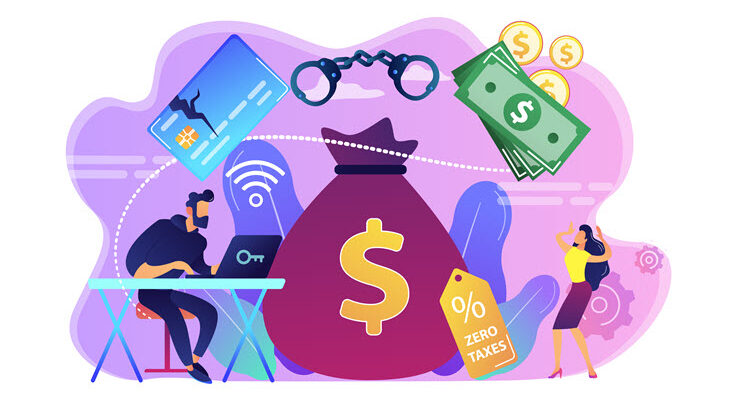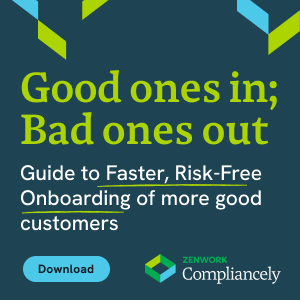
The New Anti-Money Laundering Directive and How Effective Is It?
In the June of 2018, the EU published a successor of the 4th AML Directive in the Official Journal of the European Union. This 5th successive anti-money laundering directive (AMLD) is coined as 5AMLD. This directive was published with a view to further regulate the second largest global market, the collective EU, and prevent the misuse of the financial system for money laundering and terror financing regimes.
5AMLD gave an 18-month adoption period by which all member states were required to adapt to the new directive in addition to the 4AMLD. Now, readers, please note that this deadline ended on 10th January 2020.
Now that a few months have passed since the complete adoption of the directive and most entities in the EU are obliging with the new regulations, let’s look at some stats and the implications of the 5AMLD on a variety of emerging markets and use cases.
5AMLD: Key Takeaways
- Limiting anonymous privileges for virtual currencies, traders, and wallet providers
- The threshold amount has been lowered from 250(Euros) to 150(Euros) to identify purchasers of e-money holders and pre-paid card buyers
- Trusts, entities, and other EU organizations that were previously immune to UBO Registry are now mandated to make public information available in the registers
- Enhanced due diligence is mandated for third countries where the risk of misuse of financial systems for terror financing and money laundering is high.
- All EU members are required to create independent PEP lists to identify and designate individuals who have an unfair advantage over financial resources through political power
5AMLD: Key Takeaways: Broader View
5AMLD Implications On Cryptocurrencies
The cryptocurrency exchanges, virtual currency providers, traders, and other intermediaries are all required to be transparent with the particulars of transactions and limit the anonymous privileges of the virtual currency trade.
5AMLD requires all entities, including crypto-related entities to maintain compliance by following the prescribed tax laws, identify its users, and monitor transactions.
Cryptocurrency market is now adapting to identity verification methods to penetrate the identities of its user base and hold tax evaders accountable.
5AMLD Implications On Prepaid Cards & e-Money
Similar to the crypto narrative, prepaid card buyers and e-money holders are now regulated for financial and civil risks. In fact, every entity that is providing e-money or pre-paid cards is required by the EU to validate its users to ensure that they do not possess risk and make its user information transparent to the authorities. Limitations on transaction thresholds also come into play here.
It is essential to note that the pandemic also had a significant effect on how most users viewed prepaid cards and e-Money, which further accelerated the need for identity verification within this emerging market.
5AMLD Implications on Beneficial Ownership
The 4AMLD did not include trusts, estates, and other alike organizations in the AML and CFT regulations, which are now addressed by the 5AMLD’s UBO narrative. The successive directive regulates trusts, estates, entities, and alike organizations that operate directly or indirectly by owning a significant share in a company or an entity.
This requires member states to recognize and monitor the monetary activity of trusts with “legitimate interest” and identify the Ultimate Beneficial Owner of these entities within reason and feasibility pertaining to the information available in the federal registers.
Interestingly, soon after the 5AML directive was regulated, the U.K has observed a 2% decline in the self-assessments of trusts (around 5000 trusts) during 2018-2019.
5AMLD Implications On High-Risk Countries
High-risk countries are countries that continue to engage in terrorism financing, money laundering, and other illegitimate methodologies to misuse the financial systems of the collective EU. Member states are required to mandate identity validation and verification and transaction monitoring on individuals and entities trading to and fro high-risk countries.
These stats show that the EU and other emerging markets were quick to adapt to the 5AMLD. Most high-growth markets are now embracing the advantages of verifying customers and intermediaries.
5AMLD Implications On Politically Exposed Persons (PEPs)
5AMLD requires member state authorities to maintain independent lists of politically exposed people who have an unfair advantage over financial resources and misuse their political power to promote or cause money laundering and financing terrorism.
The EU especially advises entities within the financial services and banking industries to validate the identities of customers with due diligence and enhanced due diligence (in the case of high-risk countries) to prevent and report the misappropriation of the financial systems.
Market statistics show that the BFSI (Banking, Financial Services, and Insurance) industry is a key market player when adapting to identity verification solutions and digital identification automation.
We think it is fair to lean towards the narrative where the collective EU publications to regulate and contain the misuse of financial systems through AMLD4 and its successor AMLD5 are showing significant results even in such a short span. However, to draw a definite conclusion, we need to wait for a few more months to see more definite and cumulative figures.
How Compliancely Can Help
Compliancely, a real-time identity verification API enables you to identify, validate, and verify individuals and entities against authorized data lists. You can verify as many as 100,000+ identities in just a few minutes, removing manual workload on your KYC-centric operations and powering your due diligence teams with smart, automated solutions.
